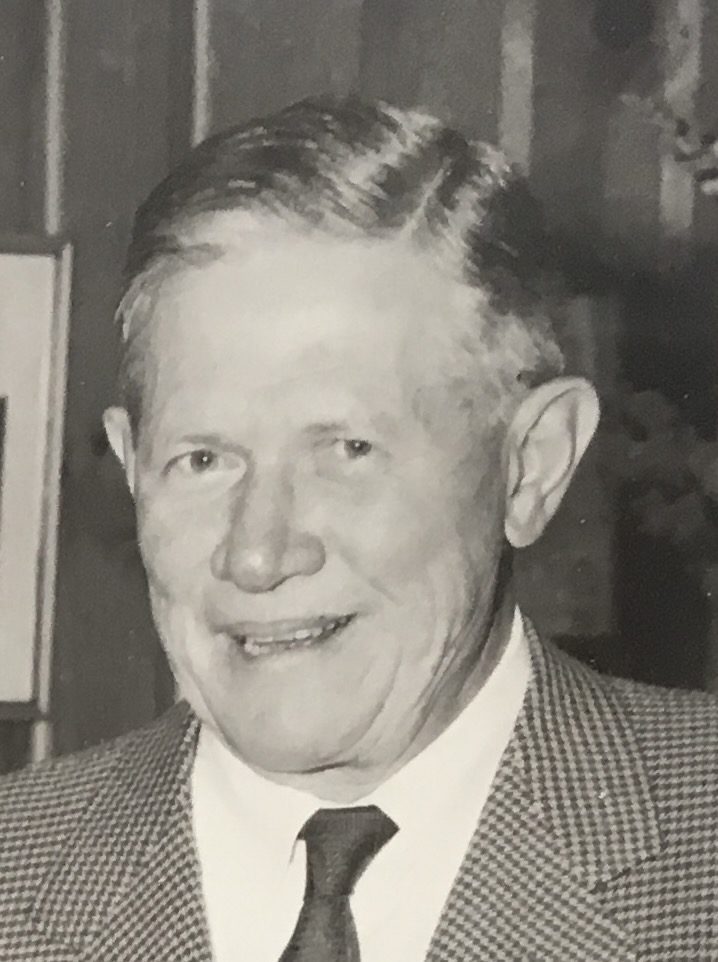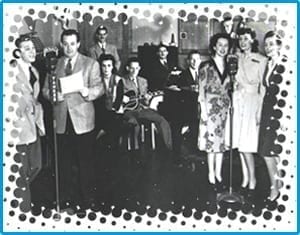History of Marshmallow Fluff
On May 14, 1920, a small article appeared in the Lynn, Massachusetts, Daily Evening Item announcing that two young men, H. Allen Durkee and Fred L. Mower, both graduates of Swampscott High and veterans of the United States Infantry in World War I, had formed a partnership in the manufacture of Marshmallow Fluff. The actual date that they started working together is hard to pin down, because they had been making candies together before they started making Fluff. The company numbered two men in those days, and they started out cooking their confections in the kitchen at night and selling them door to door in the daytime.

H. Allen Durkee

Fred L. Mower
As Durkee wrote in 1930: “Ten years ago we started out with one barrel of sugar (at 28 cents per pound) a few tin cans: two spoons: one second hand Ford, and no customers, but plenty of prospects. Today (after a short span of only ten years) we have thru the fine cooperation of the wholesale grocers, the largest distribution of marshmallow cream in New England, and no Ford.”
The origins of Marshmallow Fluff actually go back to 1917. Before WWI, a Somerville MA man named Archibald Query had been making it in his kitchen and selling it door to door, but wartime shortages had forced him to close down. By the time the war was over, Mr Query had other work and was uninterested in restarting his business, but he was willing to sell the formula. Durkee and Mower pooled their saving and bought it for five hundred dollars. Having just returned from France, they punningly renamed their product “Toot Sweet Marshmallow Fluff” but “Toot Sweet” didn’t stay on the label for long. The situation of “no customers, but plenty of prospects” didn’t last long either. An early receipt still in the company’s scrap books records the sale in April, 1920 of three one gallon cans to a vacation lodge in New Hampshire. The price at the time was $1.00 a gallon! The door to door trade gained a reputation among local housewives that eventually placed Fluff onto local grocers shelves. Retail trade spread from there to the point where in 1927 they were advertising prominently in Boston newspapers.
In 1929 they moved to a factory on Brookline Street in East Lynn, more than tripling their floor space to 10,000 square feet. At this point, they also hired four new employees, bringing their numbers to ten. They also merged with the Cream of Chocolate Company, makers of Rich’s instant Sweet Milk Cocoa, and Durkee-Mower entered the Hot Chocolate business. Rich’s Instant Sweet Milk Cocoa was too long a name for shoppers to be expected to remember easily, so in 1937 the name was shortened to simply Sweeco, and made more prominent on the label. The name and label change was backed up by a large newspaper advertising campaign, and the product’s sales increased rapidly. Durkee-Mower continued to make Sweeco until 1962.
 Durkee-Mower became a pioneer in radio advertising when in 1930 they began to sponsor the weekly “Flufferettes” radio show on the Yankee radio network (listen now), which included twenty-one stations broadcasting to all of New England. The fifteen minute show, aired on Sunday evenings just before Jack Benny, included live music and comedy skits, and served as a steppingstone to national recognition for a number of talented performers. The show continued through the late forties.
Durkee-Mower became a pioneer in radio advertising when in 1930 they began to sponsor the weekly “Flufferettes” radio show on the Yankee radio network (listen now), which included twenty-one stations broadcasting to all of New England. The fifteen minute show, aired on Sunday evenings just before Jack Benny, included live music and comedy skits, and served as a steppingstone to national recognition for a number of talented performers. The show continued through the late forties.
Some of the earliest Flufferettes shows included the Book-of-the-moment Dramas. In this series of thirteen short comic sketches, a fictional scholar with the proper Bostonian name of Lowell Cabot Boswell confronted some creatively rewritten moments in American history, from the Revolutionary War to the Harvard-Yale bicycle race. Each episode ended with a narrator reporting that Boswell had disappeared to continue work on his mysterious book, which was assumed to be a historical text of monumental importance. On the last episode the Book-of-the-Moment was revealed. It was a collection of recipes for cakes, pies, candies, frostings and other confections that could be made with Marshmallow Fluff, appropriately entitled the Yummy Book. The book has been updated many times since then, and the most recent version is thirty-two pages long. It is available on our website as a free download in a PDF file.
Though they had been doing well enough in the depression to purchase a two story factory in 1934, with World War II came supply shortages like the ones which had put the original producer of Fluff out of business. The existing sugar supply was rationed to the corporations that needed it. Unwilling to stretch their supplies by altering the recipes of Fluff and Sweeco, which would have lowered their quality, Durkee-Mower was forced to cut production back considerably. In the interest of fairness, they allotted their products to the distributors on a percentage basis, each distributor’s quota determined by their pre-war sales records. During this period, the company’s resources were used to promote the war effort in various ways. Part of the factory was converted to wrap war critical electronic and optical parts in special water proof packages. Some of their advertising helped promote victory gardens in cooperation with the Massachusetts State War Garden Committee. With little Fluff to sell, the Flufferettes show threw its advertising support to the armed forces, particularly the Navy, the branch which Allen Durkee’s two older sons served during the war years.
 Meanwhile Durkee-Mower worked on plans for the future. In 1945 they built a new modern office building adjacent to the factory purchased eleven years earlier. When industrial sugar rationing ended in 1947 the company was preparing for another expansion. They started by redesigning the product’s package. A survey covering a wide sample of New England housewives told them that the experts, their customers, thought that the best jar for Fluff would be short enough to fit easily into the refrigerator to be used for leftovers (Fluff requires no refrigeration), and have a wide enough opening to fit a tablespoon into. In addition, the jar was made with a stippled surface above and below the label to make it stronger and more easily gripped. The jar’s longevity in a rapidly changing market is a tribute to its success; the same basic jar is still in use today.
Meanwhile Durkee-Mower worked on plans for the future. In 1945 they built a new modern office building adjacent to the factory purchased eleven years earlier. When industrial sugar rationing ended in 1947 the company was preparing for another expansion. They started by redesigning the product’s package. A survey covering a wide sample of New England housewives told them that the experts, their customers, thought that the best jar for Fluff would be short enough to fit easily into the refrigerator to be used for leftovers (Fluff requires no refrigeration), and have a wide enough opening to fit a tablespoon into. In addition, the jar was made with a stippled surface above and below the label to make it stronger and more easily gripped. The jar’s longevity in a rapidly changing market is a tribute to its success; the same basic jar is still in use today.
Having designed the jar, Durkee-Mower designed the factory that would fill those jars with Fluff with the greatest efficiency. When the new factory opened in 1950, it was one of the most modern food manufacturing plants in the country. Much of the machinery was specially designed for Durkee-Mower. The new filling and capping machines increased the speed of production from 80 jars per minute to 125. Much of the line was automated, but because their plans included increasing production, they could automate without laying off any employees. Speed and efficiency however came second to cleanliness and purity. Wherever Marshmallow Fluff was exposed to air the room was air conditioned or dehumidified or both. The walls and floor were sanitary tile covered to facilitate the daily wash down which still takes the crew one and a half hours to complete. They switched from using granular sugar in 100 pound bags to liquid sugar stored in 5500 gallon stainless steel tanks. Every conceivable measure is taken to protect the purity of Marshmallow Fluff. Because of the sanitary environment and practices it is not necessary to refrigerate Marshmallow Fluff even though it still contains no preservative of any kind.
In 1956 the company collaborated with Nestle in a nationwide ad campaign that won the Promotion-of-the-Year Award. They printed a recipe for fudge in Ladies Home Journal and other magazines. The fudge was quick and easy to make, and included Fluff and Nestle’s Chocolate Bits. The same recipe can still be found on the backs of Fluff labels and in the Recipe Book.
Since the fifties none of Durkee-Mower’s innovations have been as extensive as building a new factory, but there have been many changes to improve the package, improve efficiency and reduce costs, all designed to make a good product better and less expensive. A new economy sized 13 ounce jar was introduced in 1965. In 1966 a new high ceiling warehouse was built allowing for the use of high stacking fork trucks. Palletized loading and unloading of trailers greatly reduced breakage and lessened the time required by one quarter. In 1969 they pioneered in the use of plastic food containers by offering a one pound size. The new plastic jar took ideas behind the 7 1/5 ounce jar a few steps further. The mouth is much wider and the straight sided walls taper slightly allowing for easy access to the contents. The lid snaps on easily and provides a specially designed three surface air tight seal. And because it can survive temperature changes from freezing to boiling, it’s even better for storing leftovers. Because it is lightweight and stackable it cuts down on warehousing and shipping costs.
Durkee-Mower continues to market new uses for Marshmallow Fluff and in 1966 co-promoted a new “Marshmallow Treat” © recipe with the Kellogg’s Company ® utilizing their Rice Krispies ® cereal product and Marshmallow Fluff. The recipe is easy to make, fun to modify by adding small nut pieces, chocolate pieces, dried fruit, sun flower seeds, and other cereal. It presents an opportunity to share quality time by making it with your children and continues to be a favorite. The recipe can be found among the many “Tasty Treats and Bars” section of the Online Yummy Book.
More recently, Durkee-Mower developed an easy to make cheesecake recipe, “Lynne’s Cheesecake“. It has also become a favorite, and can be varied to your liking with different pie crusts, flavorings, and fruit toppings. It’s available along with many other great cheesecake recipes in the “Easy as Cheesecake” section of the Online Yummy Book.
Business continues to expand with the recent growth of our young school-aged population wishing to enjoy Fluff the same way their parents and grandparents did before them. Additionally, Fluff is now enjoyed in Canada, the UK, France, Germany, Holland, Israel, south Africa, Belgium, and the UAE. Although Fluff enjoys wide distribution in the United States, there are still a few places where we are not located. If you happen to live in such a place, or cannot find Fluff locally, it may be ordered directly from our factory using the Order Form located in this site.

